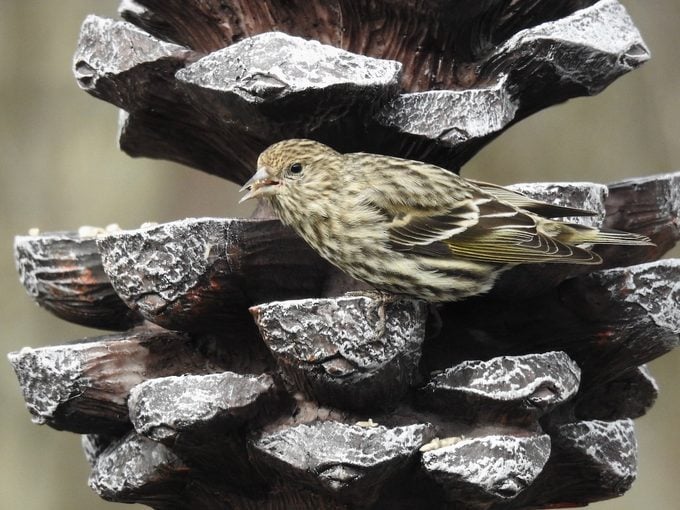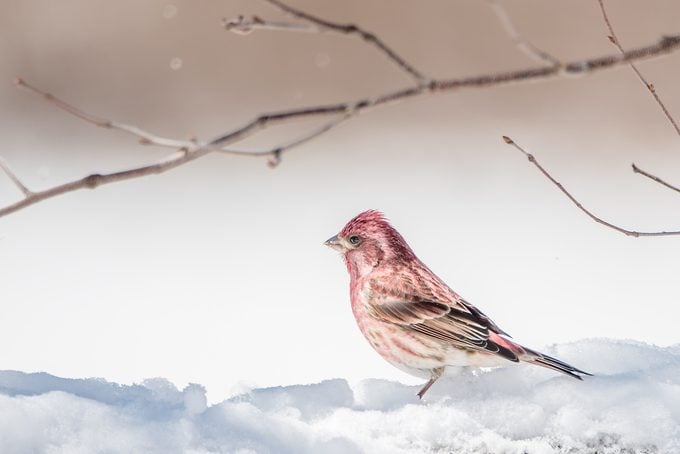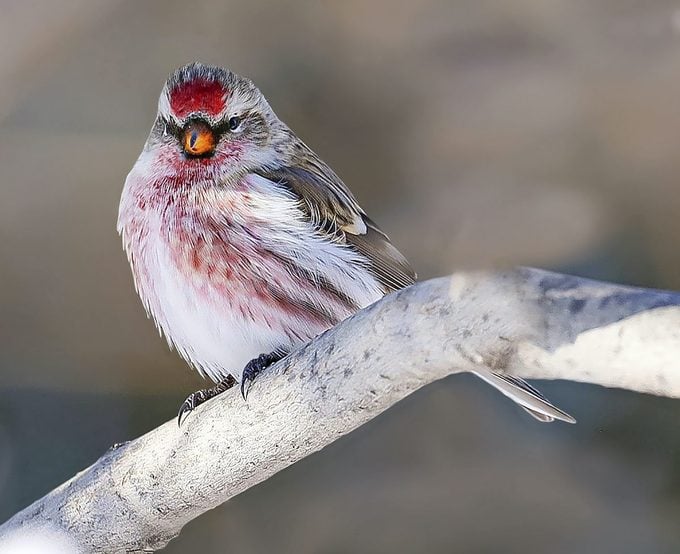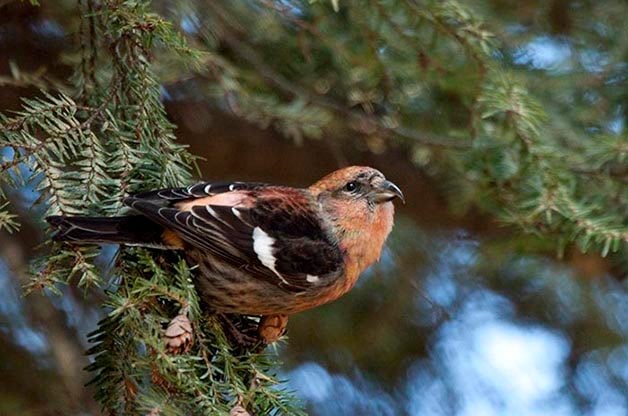Updated Winter Finch Forecast for 2023-24
Updated: Oct. 17, 2023
A biologist reveals his winter finch forecast using wild food crop data. Find out what birds you can expect to see at your winter feeders.
Track the Migration of Winter Birds

Most winters, birders in the United States can expect to see the typical feathered visitors: northern cardinals, chickadees, etc. But occasionally, a sudden surge of birds wanders outside the typical winter range. Biologist and ecologist Tyler Hoar predicts the movements of winter finches by analyzing the status of wild food crops such as spruce cones and mountain ash berries in Canada. Tyler’s winter finch forecast is based on whether or not there is enough food to feed the hungry finches in the forests of Ontario. If there isn’t enough food, he’ll predict an irruption of birds that will venture down into the United States to fill their bellies.
The reasons behind these surprising, sporadic migrations aren’t always straightforward. (Researchers have found the causes vary from species to species.) Tyler makes it clear that these are just predictions. But plenty of birders rely on his winter finch forecast to get a more accurate sense of what birds to look for in winter.
The 2023-24 Winter Finch Forecast

Tyler’s forecast for the winter of 2023-24 indicates that a variety of birds will be on the move, including purple finches. Tyler says, “Strong southward flights (of purple finches) have been seen by mid-September at the Hawk Ridge Hawkwatch near Duluth, Minnesota.” He indicates these birds likely will be seen in large numbers in the middle of the United States, even possibly reaching as far south as the Carolinas in January and February.
In addition to tracking purple finches, he also predicts this to be an good year for seeing pine siskins. Significant migration movements (thousands of birds) were reported in September.
However, most Bohemian waxwings, red-breasted nuthatches, evening grosbeaks and pine grosbeaks will likely stay in the Boreal forest and nearby areas.
Common Redpoll

Moderate numbers of common redpolls are expected to migrate southward. Offer black oil sunflower seeds and nyjer seed at finch feeders to attract them.
White-Winged and Red Crossbills

Due to poor cone crops up north, white-winged crossbills have been on the move since early summer. Additional movements are expected. Keep an eye out for small flocks in the Northeast and Midwest. “We may even see white-winged crossbills away from forests, using heavy crops on planted native and ornamental spruces within urban environments,” Tyler writes.
He also reports red crossbills have been seen in the Great Lakes region and northeastern states since July. These nomadic birds will likely spread throughout the east this winter.
Learn how to help birds in cold winter weather.
